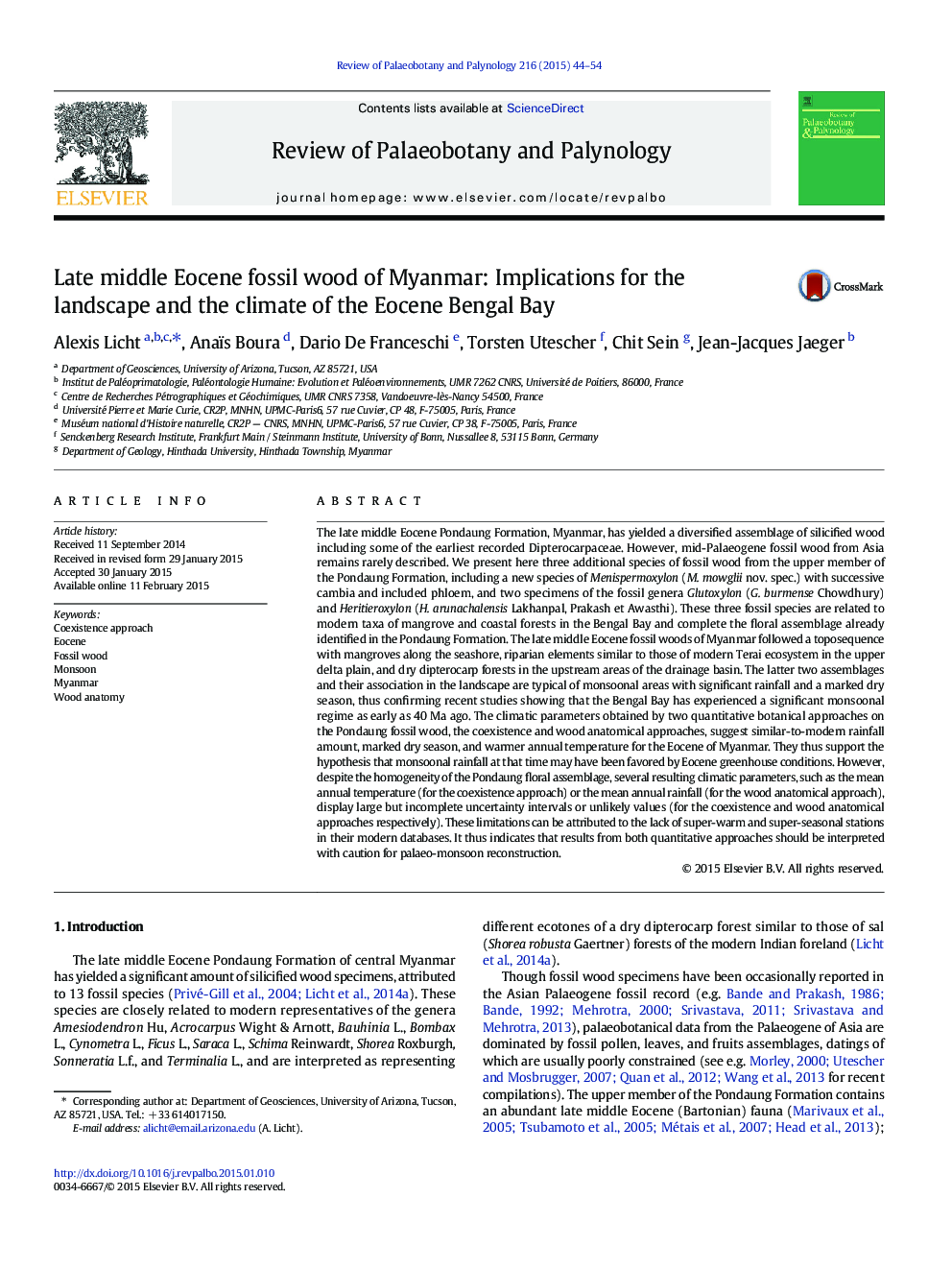| کد مقاله | کد نشریه | سال انتشار | مقاله انگلیسی | نسخه تمام متن |
|---|---|---|---|---|
| 4750136 | 1642482 | 2015 | 11 صفحه PDF | دانلود رایگان |
• We identify three additional fossil wood species from the Eocene of Myanmar.
• Eocene floral assemblage is similar to modern Terai/sal forest ecosystems of India.
• Floral quantitative approaches support modern-like Eocene, monsoonal precipitation.
The late middle Eocene Pondaung Formation, Myanmar, has yielded a diversified assemblage of silicified wood including some of the earliest recorded Dipterocarpaceae. However, mid-Palaeogene fossil wood from Asia remains rarely described. We present here three additional species of fossil wood from the upper member of the Pondaung Formation, including a new species of Menispermoxylon (M. mowglii nov. spec.) with successive cambia and included phloem, and two specimens of the fossil genera Glutoxylon (G. burmense Chowdhury) and Heritieroxylon (H. arunachalensis Lakhanpal, Prakash et Awasthi). These three fossil species are related to modern taxa of mangrove and coastal forests in the Bengal Bay and complete the floral assemblage already identified in the Pondaung Formation. The late middle Eocene fossil woods of Myanmar followed a toposequence with mangroves along the seashore, riparian elements similar to those of modern Terai ecosystem in the upper delta plain, and dry dipterocarp forests in the upstream areas of the drainage basin. The latter two assemblages and their association in the landscape are typical of monsoonal areas with significant rainfall and a marked dry season, thus confirming recent studies showing that the Bengal Bay has experienced a significant monsoonal regime as early as 40 Ma ago. The climatic parameters obtained by two quantitative botanical approaches on the Pondaung fossil wood, the coexistence and wood anatomical approaches, suggest similar-to-modern rainfall amount, marked dry season, and warmer annual temperature for the Eocene of Myanmar. They thus support the hypothesis that monsoonal rainfall at that time may have been favored by Eocene greenhouse conditions. However, despite the homogeneity of the Pondaung floral assemblage, several resulting climatic parameters, such as the mean annual temperature (for the coexistence approach) or the mean annual rainfall (for the wood anatomical approach), display large but incomplete uncertainty intervals or unlikely values (for the coexistence and wood anatomical approaches respectively). These limitations can be attributed to the lack of super-warm and super-seasonal stations in their modern databases. It thus indicates that results from both quantitative approaches should be interpreted with caution for palaeo-monsoon reconstruction.
Journal: Review of Palaeobotany and Palynology - Volume 216, May 2015, Pages 44–54
